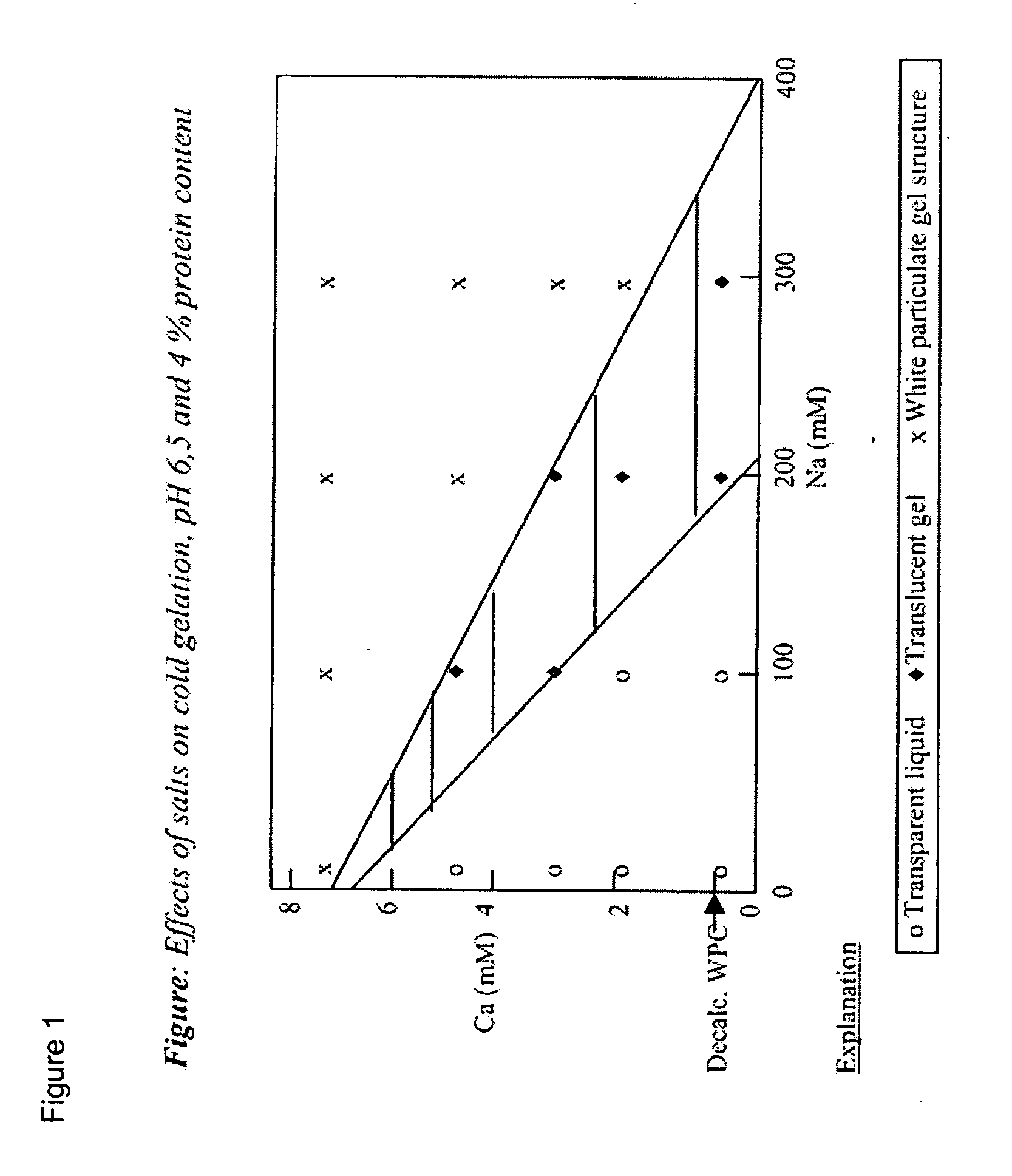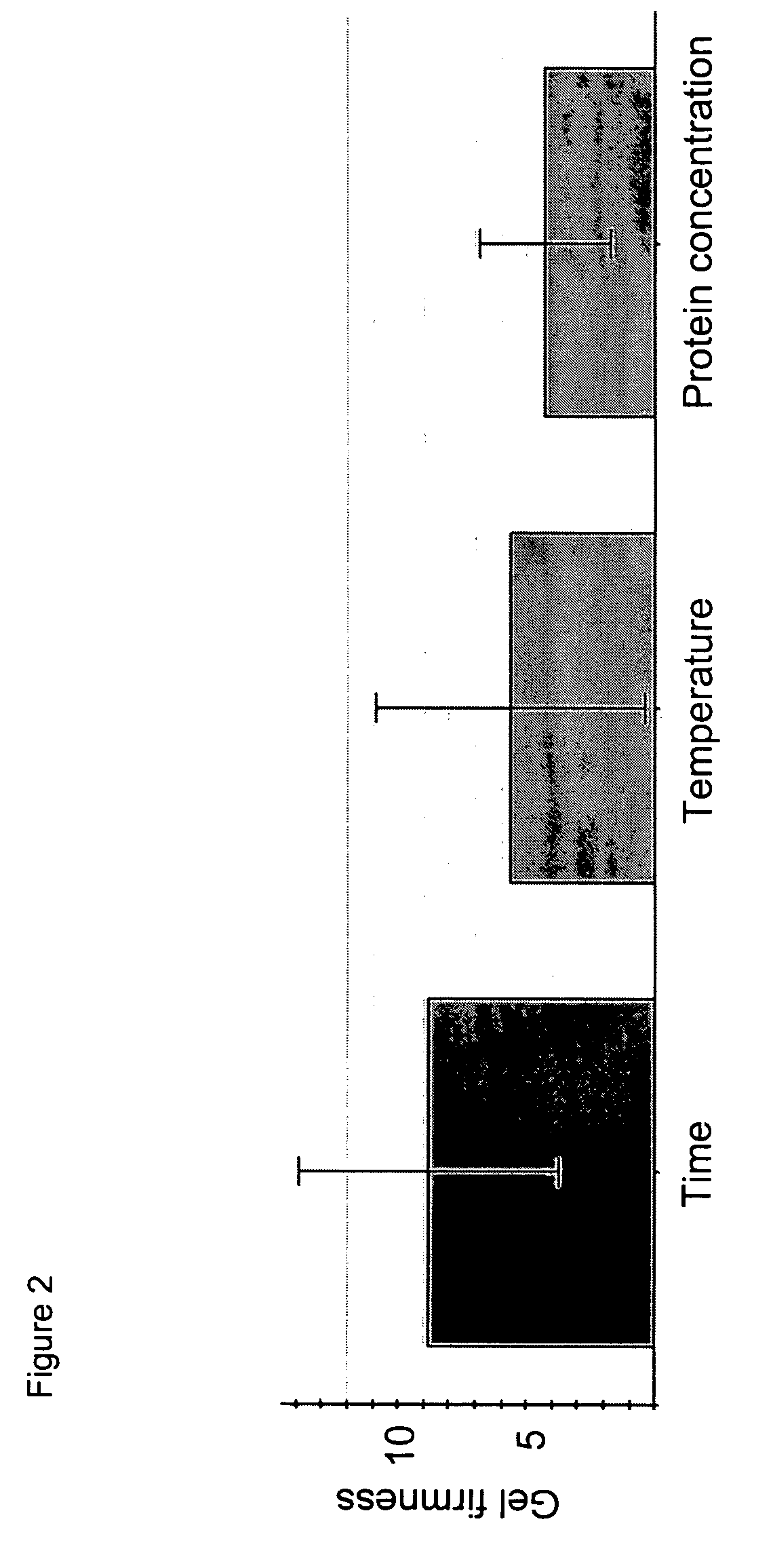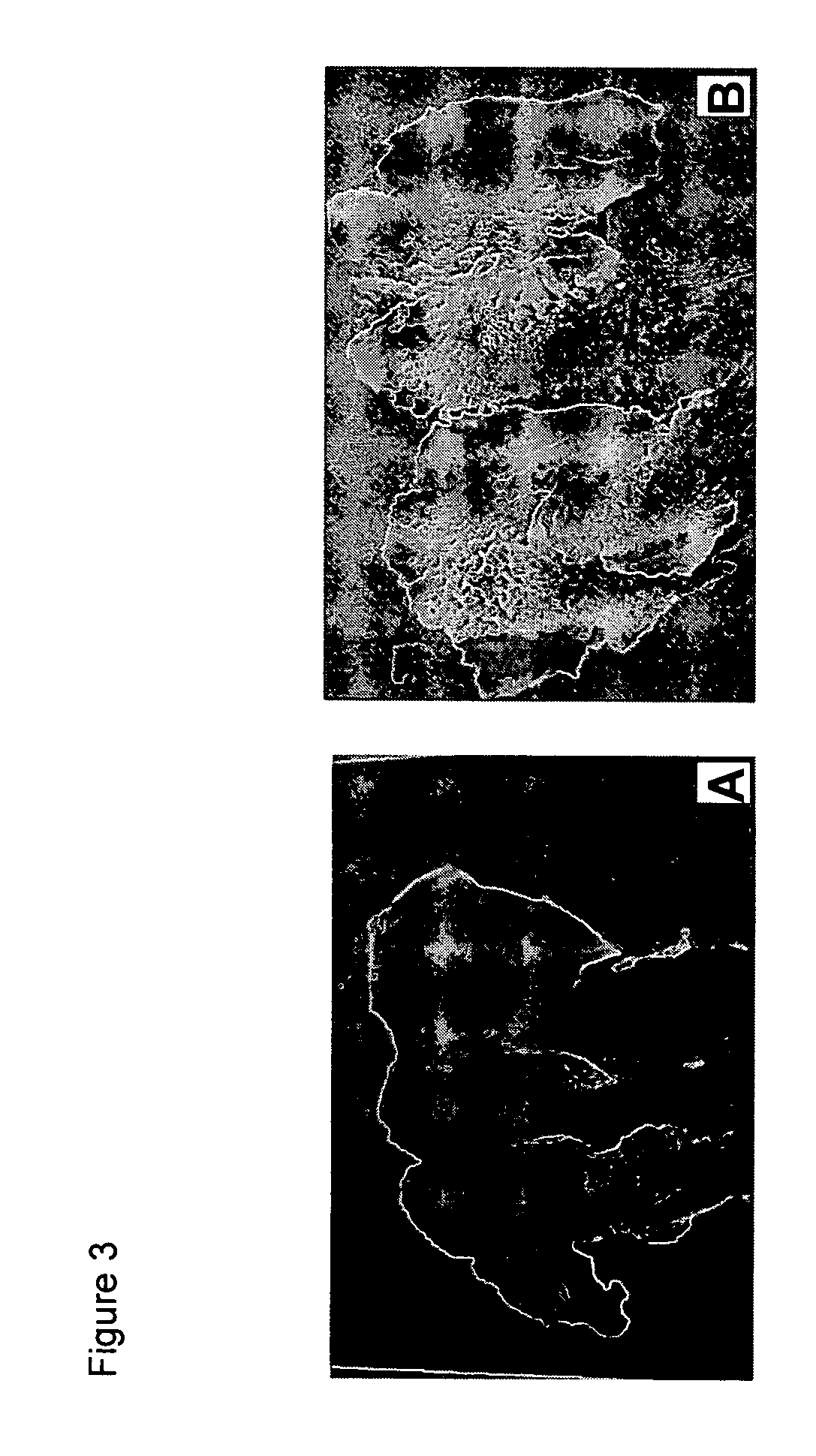Stabilisers useful in low fat spread production
a stabilizer and spread technology, applied in the field of stabilizers, can solve the problems of increasing production costs with increasing protein content, not being able to produce a product that fulfils most or all, and using gelatine, etc., and achieves the effects of low fat, low fat spread, and low fa
- Summary
- Abstract
- Description
- Claims
- Application Information
AI Technical Summary
Benefits of technology
Problems solved by technology
Method used
Image
Examples
example 1
Effect of Calcium Concentration on the Gel Characterisics During Cold Gelation of Whey Proteins
[0131] A WPC 80 concentrate of about 20% total solids (whey product obtained from hard cheese manufacturing, comprising 80% protein of total solids) was passed through a weak cation exchanger (Imac HP336 from Rohm & Haas) loaded in a mixed Na and K ionic form reflecting the Na / K ratio of milk. The calcium content was reduced to about 0.02% on total solids which corresponds to a reduction by about 95%.
[0132] The protein content was adjusted to about 8.0% and pH adjusted to about 8.0. The solution was heated for 30 min at 80° C. After cooling to about 15° C. the solution was diluted to about 4.0% protein, and pH adjusted to about 6.5. Calcium concentration was raised from about 0.3 mM in the decalcified sample to 7 mM Ca and salt was furthermore added in various concentrations. Samples were portioned in test tubes and put in the refrigerator. After two days in the refrigerator the content...
example 2
Properties of Decalcified Whey Protein Gels
[0137] At 40° C. an aqueous solution was prepared comprising: 7.9% calcium reduced whey protein (table 1) WPC80 (the composition thereof described in example 1) and 0.1% K-sorbate. pH was adjusted to about 8 with NaOH. Then the solution was heated to 80° C. and transferred to a tank with heat jacket at 80° C. After the specified holding time (0, 7.5 or 15 minutes), the product was pumped out of the tank and cooled to 10° C. Inlet and outlet rates were balanced in order to obtain a steady state level in the heating tank. Heating and cooling of the solution was performed in scraped surface heat exchangers with steam or icewater as energy transfer mediums. After cooling, an aqueous solution of lactic acid and NaCl was added to the protein solution until a pH value of about 5.7-6.3 was reached. At this step, the protein solution was diluted according to the experimental design to 5.1-6.3%, table 1. The concentration of NaCl in the final prote...
example 3
Emulsification of Heat Treated Whey Protein Solution and Butter / Rapeseed Oil
[0140] A 5.7% WPC80 solution was prepared according to example 2. The heat treatment was performed at 80° C. / 15 min and the solution was acidified to pH 5.7. The concentration of NaCl was 1.9%.
[0141] At 10° C. in an APV butter blend pilot plant, 35.1 parts sweet butter (85.5% fat, 13.0% water and 1.5% Solid Non Fat) was mixed with 22.5 parts rapeseed oil, 3.7 parts lactic culture and 69.7 parts WPC80 solution. The product was tapped in 250 g tubs and placed for storage at 5° C. The composition is shown in table 2.
TABLE 2Compostion of low fat butter blend stabilised with a heat treatedcalcium depleted WPC80 solution.Component(%)Analysis methodFat39.7IDF*) 5B: 1986Water54.9IDF 10: 1960Solid Non Fat5.4IDF 11A 1986Salt1.2IDF 12C: 2000Protein (N * 6.38)3.2IDF 20B: 1993
*)IDF = International Dairy Federation.
[0142] The firmness of the blend product two weeks after production was measured at 7° C. on a Texture...
PUM
| Property | Measurement | Unit |
|---|---|---|
| Temperature | aaaaa | aaaaa |
| Temperature | aaaaa | aaaaa |
| Temperature | aaaaa | aaaaa |
Abstract
Description
Claims
Application Information
 Login to View More
Login to View More - R&D
- Intellectual Property
- Life Sciences
- Materials
- Tech Scout
- Unparalleled Data Quality
- Higher Quality Content
- 60% Fewer Hallucinations
Browse by: Latest US Patents, China's latest patents, Technical Efficacy Thesaurus, Application Domain, Technology Topic, Popular Technical Reports.
© 2025 PatSnap. All rights reserved.Legal|Privacy policy|Modern Slavery Act Transparency Statement|Sitemap|About US| Contact US: help@patsnap.com



